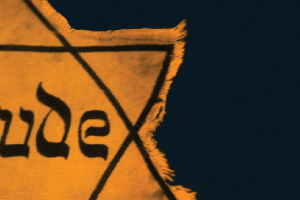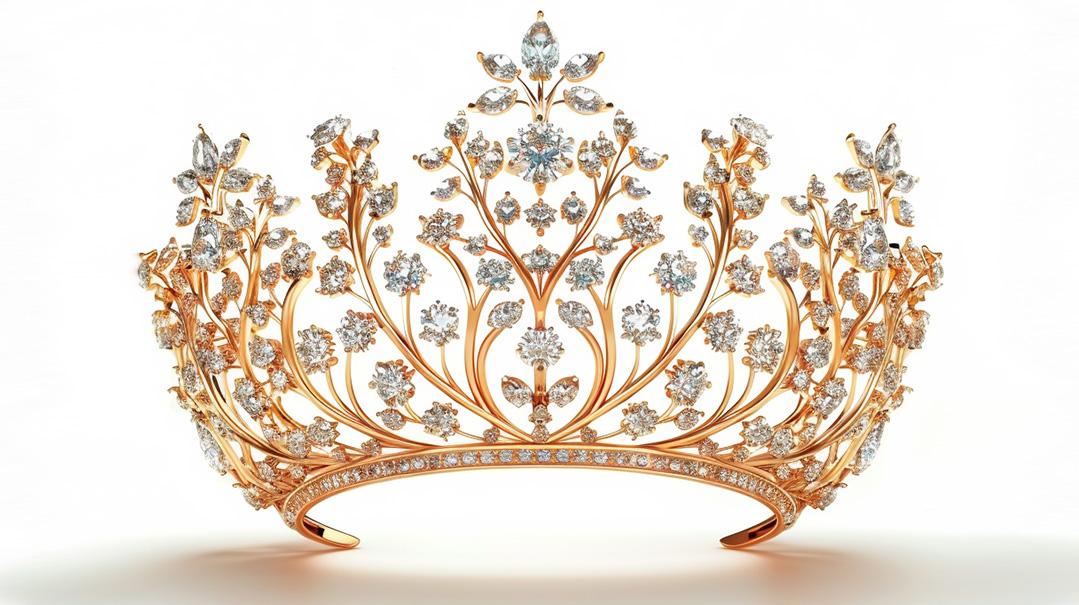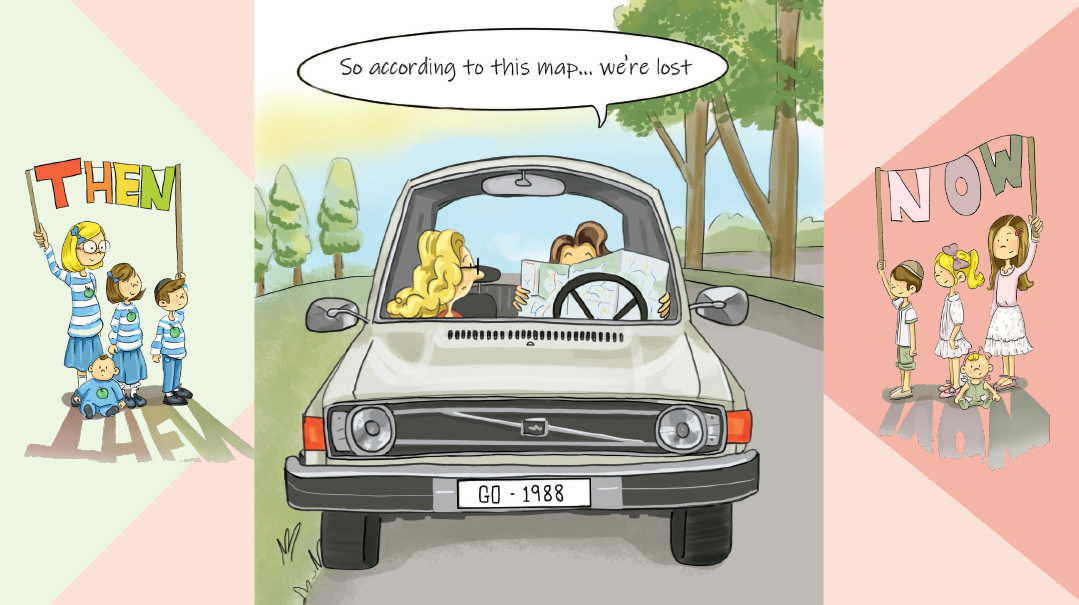Unsung Heroines

When the Nazis began their reign of terror, these four women were just young girls. Yet despite their age, they risked their lives for their fellow Jews.

Chava Bursztyn (Berenstein) — 12 years old
It was Erev Yom Kippur 1940 in the shtetl of Goworowo, Poland. The Nazis had marched into the city, leaving destruction in their wake. Most of the 500 Jewish homes had been razed to the ground.
This was not the first act of anti-Semitism that the local Jews had endured. During World War I, the citizens of Goworowo — situated on the Warsaw-Lomza railroad line — were accused of espionage by the Russian army because the eiruv around the shtetl was made with the use of a telegraph pole. As a punishment, on Shabbos Nachamu of 1915, the town was burned to the ground.
Ever resilient, the Jews rebuilt the community, likely aided by two wealthy brothers — Nota and Isser Rein — who owned a flour mill and the town’s electric company. Decades later, these two men invited the entire community, now homeless, to take refuge in the flour mill, which had been emptied by the Nazis when they confiscated the entire stock of flour. Even so, there wasn’t enough space to house the entire Jewish community; some families were forced to rent rooms from non-Jews in the surrounding area.
With no food to be found and Yom Kippur fast approaching, the rav of Goworowo — a prominent talmid chacham named Rabbi Alter Moshe Mordechai Bursztyn — began to worry. He feared that since no one had eaten, the Jews of the community would be too hungry to pray and fast properly on Yom Kippur.
Overhearing her father voice his concerns, the rav’s 12-year-old daughter Chava began brainstorming. Who could they ask for help? Then, suddenly, she had an idea. There was a Pole by the name of Karolek (Polish for Charles) living in the neighboring town of Sochochin who had always been a friend to the family. Maybe this non-Jew — who still had access to food — would be kind enough to provide bread for the community?
Chava related the idea to her father, offering to go by foot to Sochochin to ask Karolek for help. Rabbi Bursztyn was hesitant: How could he allow his young daughter to take such a long and dangerous journey? Then again, how could he not, if it meant feeding the entire community? After realizing there was no alternative, he agreed, telling her, “Go, my child, and bring bread for all the Jews of Goworowo.”
Chava asked her friend Esther Leah Gamra to join her, and together the girls walked alongside roads and overgrown paths to avoid the Nazis, who were swarming all over the highways.
After some time, they reached Karolek’s house. He and his wife were astonished upon opening the door. They had heard that all the Jews were killed, and were certain that the two Jewish girls standing before them were ghosts. When they recovered from shock, they invited the girls in. And as soon as Karolek heard their request, he instructed his wife to bake a batch of bread as quickly as possible.
Karolek served the two young girls some food and inquired about all of his Jewish friends. The girls waited there until the early afternoon, at which time the bread had finished baking. Then Chava and Esther Leah were given several loaves each for the community. Karolek added an extra loaf for Chava to give to her father, and begged the girls not to reveal his name to the Germans if they were caught. They gave him their word and hurried back to Goworowo.
Chava and Esther Leah arrived at the Reins’ flour mill shortly before sundown, just in time for the Jews to eat the seudah hamafsekes. The Jews were overjoyed at the sight and aroma of fresh bread, which enabled them to fast better on Yom Kippur. The rav shared the extra loaf, baked just for him, with his fellow Jews.
That Yom Kippur was the last one to be commemorated by the Jews of Goworowo. They were later expelled, some to the ghetto in Bialystock and some to death. Chava was deported to Auschwitz, but survived. She married Rabbi Moshe Berenstein and made her home in Netanya, Israel.
Sarah Zeidoff-Beker — 13 years old
Prior to World War II, the Jews in Lodz, Poland, numbered 233,000 — about a third of the city’s total population and Europe’s second-largest Jewish community.
In February 1940, the Lodz ghetto was established. By May, it was sealed. Those Jews who had not fled the city, about 200,000, were confined to the ghetto and assigned (if lucky) to work in one of the 70 factories built to produce goods for the Wehrmacht, the German military force.
Sarah Zeidoff, only 13 years old, was registered to work in a laundry workshop, where the clothing of the Jews who had been deported from the ghetto were sent. There, the clothes were recycled according to the Germans’ needs.
Sarah’s boss was a chassidic man named Zvi Hirsch (Hershel) Prashker. He was the son-in-law of Aaron Cytryn, one of the most distinguished manufacturers in Lodz before the war. She was fortunate to have him as a boss — he treated all his employees well, and was especially kind to the child laborers. Sarah was the youngest of them all.
One winter day in 1944, Mr. Prashker seemed to be staring at Sarah. The young girl grew alarmed, fearing that she was a candidate for deportation. Then Mr. Prashker approached her and asked if she could keep a secret.
“Yes, of course,” she replied.
He quietly told her about a special assignment, one that would involve great danger. He believed she was the right person for the mission, he explained, because of her outstanding family. Handing over an envelope, he gave her directions to a broken-down shack, located near the “Kripo.”
Sarah understood the gravity of the situation. The Kripo was the police station, situated at 8/10 Koscielna Street. During the war, the inhabitants of the ghetto called that particular police station “the Red House” — both because of its brick color, and because of what it represented, a place of torture.
Sarah was to go behind the broken-down shack and find, among the ruins, a concealed door. She was to knock on the door three times and say “Hersh’l sent me” before giving over the envelope.
“You have to be careful,” Mr. Prashker warned her. “Many people are depending on the success of your mission.”
After work, Sarah made her way to the shack, pretending to search in the heap of wreckage for a piece of wood for fuel, a common sight in the ghetto. After finding the hidden door, she knocked three times, softly repeating, “Hersh’l sent me, Hersh’l sent me.”
When the door opened, a young chassid stood before her. He was emaciated, and had a beard and peyos. Because the Nazis had shaven off all the Jews’ facial hair and peyos, Sarah was startled by his appearance.
She quickly handed him the envelope and, as her eyes adjusted to the darkness, she realized she was standing at the door to a large hall, which was actually a beis medrash. Seated around a table were 40 or so young chassidim studying Gemara. It took her a while to absorb the scene — no yeshivah had existed in the ghetto for years.
Sarah repeated this mission several times, each time Mr. Prashker warning her to exercise extreme caution. She later learned that the young men were not registered in any workshop, and thus did not have ration cards. Mr. Prashker himself supported these men through the envelopes Sarah delivered. In this way, they were able to learn Torah clandestinely under the very noses of their oppressors.
Sarah Zeidof-Beker was later deported to Auschwitz, where she remained until her liberation. She settled in Kiryat Ata in Israel.
Chava Bronstein — 14 years old
When she was just 14 years old, Chava Bronstein was uprooted from her home in Senz, Hungary, and brought to the Reinikendorf concentration camp in Berlin.
Her belongings were quickly confiscated, but she managed to hide a small siddur in her pocket. Each day, as she marched to her job in the Argos Verken — a factory producing aircraft parts — she would touch the hidden siddur, and her faith in Hashem would be strengthened.
It was bitterly cold in the factory. The room Chava worked in was enormous, and filled with dozens of machines. She, as well as many others, would damage the parts that they were working on so that the Germans wouldn’t be able to use them.
Her shifts were long — 12 hours straight — and the young girl was constantly hungry. She wasn’t alone; it wasn’t unusual to see a fellow laborer faint from starvation. When this happened, Chava and others immediately went into action. They would revive the girl with water and hide her behind a machine, away from the German overseers. But this had its risks: anyone not working was accused of sabotage and punished severely. Even those who were simply resting were beaten.
One day, Chava’s friend was shivering, running a high temperature, and unable to work. To prevent her from being detected, Chava hid the girl behind her polishing machine. That very day, there was an inspection in the factory. Chava was so tense that she didn’t pay proper attention to the needle of her machine: it missed its target and made a deep scratch in her finger. Her hand began to swell up — the pain was so great, she couldn’t breathe. But she was otherwise successful: her friend wasn’t caught.
During a visit to the infirmary later, the nurse yelled at Chava, exclaiming that the pus had reached up to her shoulder and she might die from the infection. Using a regular kitchen knife, the nurse cut her several times — without anesthesia or disinfectant — before bandaging the wound.
The following day, when Chava went to work, her hand was still swollen and full of pus. She pretended to be working when a Yugoslav engineer came to inspect their work.
When the man approached her machine, Chava explained to him in Slovakian — which she knew was similar to his native Serbian — that she was unable to work because of the injury in her hand. Then she did something bold.
“Are you able to work for the enemy with a clear conscience,” she asked, “knowing that your friends and brothers are fighting against them?”
The Yugoslav engineer did not respond, and left. The following day, one of the overseers called her into his office and handed her a tube filled with ointment as “a reward for diligent work.” Underneath the cover of the tube was a tiny piece of paper on which was written, “I am with you. Tear up this note. —Engineer.”
Chava applied the ointment to her wounded hand and the pus slowly began to drain out. Within a few days, her finger was healed. She thanked the Ribono shel Olam for the miracle.
From that time on, the engineer was especially kind to her. He even closed his eyes to her sabotage. Whether he was a Nazi or a partisan planted in the factory, Chava never discovered. But she knew he was a messenger from Hashem who had come to heal her at just the right time.
Chava remained in Reinikendorf until the end of the war and then lived in Jerusalem with her family.
Mira Esther Leslo — 15 years old
In 1941, Skerniewicz, Poland, officially became Judenrein — cleansed of Jews. At the time, Mira Esther Leslo was almost 15 years old. Expelled from her hometown, she and her family, like many others, were crowded into a ghetto in neighboring Mezrice.
To keep her family from starving to death, Mira would sneak out to the Aryan side of the city and exchange some of her family’s linen for food. Her feeling of usefulness stifled her anxiety over being caught. Her mother, on the other hand, couldn’t bear the running and hiding. She fell ill and passed away.
Eventually, Mira was caught and sent on a transport to Auschwitz. She was one of several Jewish girls assigned to the Weichsel-Union-Metallwerke, a munitions factory within the Auschwitz complex that had been erected in the later stages of the war after many German munitions factories had been bombed.
Mira’s job was to produce gunpowder for cannon shells. Despite being under constant guard, she would take small amounts of gunpowder, wrap it in bits of cloth, and hide it on her body, to be passed along in a smuggling chain. At the end of the chain was the Sonderkommando, a special squad of prisoners forced to work in the camp’s crematoria. Using this gunpowder, the leaders of the Sonderkommando planned to destroy the gas chambers and crematoria, and launch an uprising.
On October 7, 1944, having learned that the SS was going to liquidate most of the squad, the members of the Sonderkommando at Crematorium IV rose in revolt. They set fire to the crematorium, and attacked the SS guards with hammers, axes, and stones. The flames rising over the building was the signal for the Sonderkommando at Crematorium II to go into action. They killed a Kapo and several SS men. Several hundred prisoners escaped from Birkenau, almost all of whom were tragically caught and killed by the SS. Later that day, an additional 200 prisoners who took part in the revolt were executed.
Mira was the only member of her family to survive the war. She later moved to Tel Aviv.
The above stories are based on original Hebrew testimonies. They appear in English translation in a book titled Women In The Holocaust by Jehoshua and Anna Eilenberg-Eibeschitz.
(Originally featured in FamilyFirst, Issue 300)
Oops! We could not locate your form.







